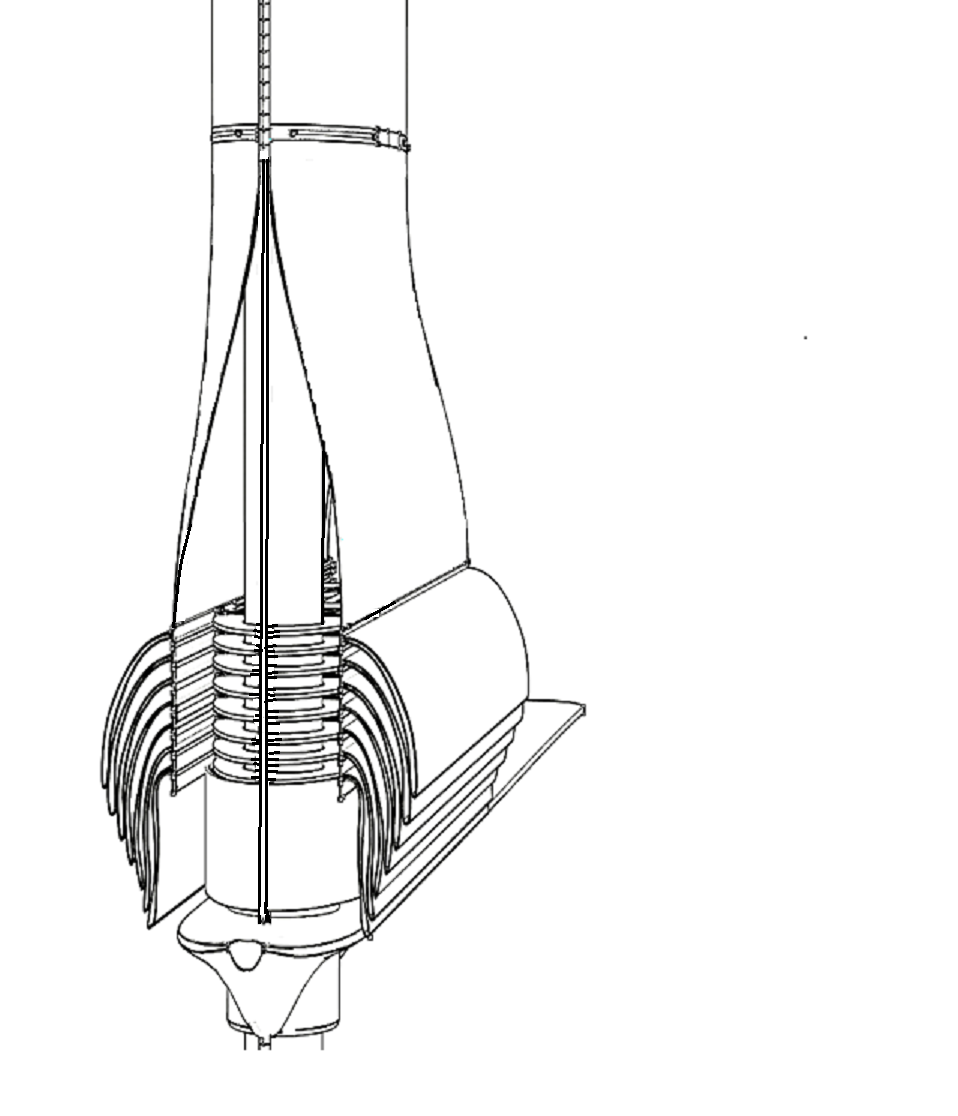Current high performance wingsails
Examplified by C Class Catamarans (25 ft LOA) With rigid framed wingsails and the hangars needed to keep them in for storage during an event. For larger craft such as the AC45 catamarans a crane would also be needed to rig/derig the boat every time it is used as the wing sail cannot be safely left up for long.
.jpg)
Current more practical alternative wingsails either:
Can be lowered in a manner similar to a collapsible paper lantern in which the lowered part of the sail is just simply crumpled up, a process which effectively prohibits the use of efficient modern sailcloth made from sheet materials such as mylar® or:
Usually consist of double sail surfaces that are effectively each a conventional soft sail and which rely on the stiffness of their battens unsupported by internal framework to maintain the shape of the sail. This has the drawback of resulting in a sail that tends to have greater curvature as it gets deformed by strong winds, whereas the opposite is required in order to reduce drive to maintain control of the boat in these conditions.
Oceanic Wingsails
Wingsails based on rigid transverse frames which can straighten out to allow the sail covering on either side to be flaked or furled. The sailcloth/film panels are always in single curvature apart from a transition zone near the base of the mast where the curvature transition is gentle enough to avoid crumpling. This allows the performance advantages of a rigid wing sail with film based sailcloth/covering to be retained while allowing the sail covering film to be reefed or removed altogether while leaving the mast in place as is typically done for most beach cats and cruising yachts.
.jpg)
Sail forming aerofoil section as flat covering panels are stretched over frames bent in curves. The masthead and double luff arrangement illustrated is suitable for large yachts or ships, but can be simplified by using a zip (zipper if you are American) to join the leading edges of the two sail covering panels as is commonly done for zippered luffs of beach catamaran jibs, for craft up to the size of a typical cruising yacht.

Sail flaked down as two separate flat panels over boom. Alternatively a roller system could be used e.g. on larger vessels, providing the sail covering is detached from the longitudinal frames.
.jpg)